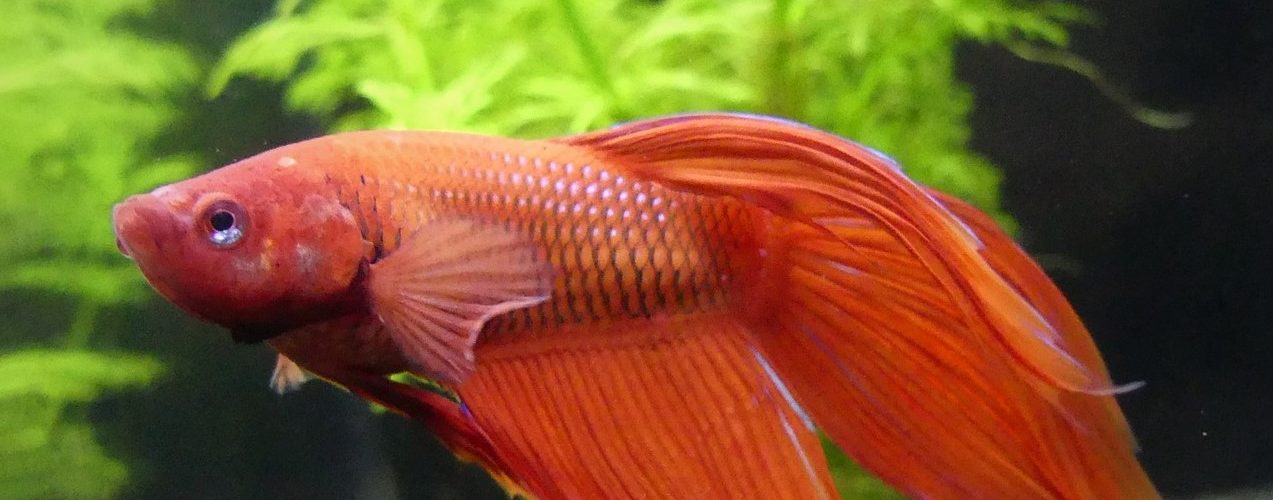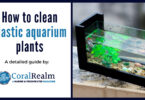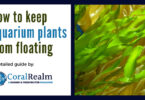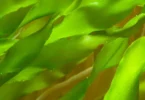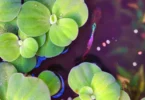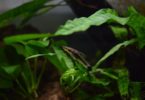Last Updated on November 19, 2022 by Matt
Also known as Siamese Fighting Fish, the full scientific name of the most common species of Betta Fish is Betta splendens. Native to Asia, Betta fish naturally inhabit shallow waters of ponds, slow-moving streams or small rivers and marshes. As you would expect, these ecosystems are filled with betta fish plants!
Bettas are diurnal. This means that they are awake and active during daylight hours and asleep during the night. Betta fish require darkness, therefore, to enable them to sleep well.
Novice aquarists with little experience should not keep these specialist fish which have very specific requirements. Betta fish are complex and sensitive to their diet and environment. In the wild, of course, they will seek out their own ideal habitat but in captivity these lovely fish can suffer terribly when kept in inappropriate aquarium environments. As such it is important to have the best plants for Betta fish in your tank.
In this article we will guide you through the best live plants for Betta fish, as well as the best artificial Betta fish plants. Remember that a Betta needs a minimum of a 5 gallon tank, although a 10 gallon fish tank will be much more appropriate.
IN THIS ARTICLE
Best Live Betta Fish Plants

As responsible aquarists, we are always seeking to replicate the natural, wild environment of the fish within our care.
This is never more important than with Betta fish. As we’ve discussed, they do have very specific needs, and novice fish tank owners shouldn’t attempt to keep them without extensive study and commitment.
What you choose for your Betta fish plants plays an extremely important role in replicating their natural wild environment; providing them with the habitat they need to thrive in a tank situation.
We generally recommend live plants for aquaria over and above the artificial variety that are now commonly available. This is especially true when considering the Betta fish tank due to their more sensitive nature. Both types of plants, both artificial and natural, will provide hiding places and possibly opportunities for nesting.
However, natural live plants have the benefit of improving the water quality due to both the oxygenation capability, their natural filtration capacity and the housing of beneficial bacteria. Live Betta fish plants will remove nitrate and phosphate from the water column, helping to prevent the need of phosphate removers. If nitrate levels build it can lead to nitrate poisoning. This isn’t to say that you won’t need a Betta fish filter though. Beneficial bacteria will add to biological filtration, removing dangerous ammonia and nitrite. Debris and detritus that accumulates on the substrate will also release these compounds, so need to be removed with an aquarium vacuum cleaner like that attached to the Python water changer.
With artificial plants, we recommend those made of silk rather than plastic. This is in the hope of avoiding hard, sharp material upon which the Betta fish can damage their delicate fins.
We find that it’s best to combine both natural and artificial plants within the Betta aquarium to gain the advantages of both worlds. Here are our top choices for Betta fish plants.
Java Fern

A member of the Polypodiaceae family and with many different subtypes, Java Fern, also known as Microsorum pteropus, is a very popular species.
Java Fern originates from South East Asia, as do Betta fish, so it’s understandable why these plants help to recreate the natural environment for these fish.
In its natural state, Java Fern is a jungle plant which grows around the base of tree trunks and on rocks on the margins of rivers, streams and waterfalls.
Usefully for the aquarist, Java Fern grows equally well fully submerged in a tank as it does partially submerged.
Java Ferns have long, slender leaves and a thick rhizome out of which the roots grow. It is a hardy plant which can manage in the majority of aquaria and it really is an attractive addition to any tank.
These ferns do extremely well without resorting to the use of aquarium fertilizers – an important quality when keeping Betta fish which are sensitive to chemical additions to the tank.
How to Plant Java Fern
When you buy a Java Fern from an aquarium supplier, pet shop or even via the internet, it will usually come already attached to a small piece of driftwood. However, it’s perfectly fine to buy Java Fern in a natural unattached state.
You don’t need to plant it in the usual way within substrate, but can simply attach it to any wood, stones or decorative items that you have in your tank. We tend to attach to wood or stone as it looks so natural, and Java Ferns grow very well in this way as again it replicates its natural choice. Once attached to the wood, it should flourish and grow and, in time, will propagate itself.
Secure the Java Fern to the wood or rock with gardening ties or even fishing line. Once the roots are firmly attached, remove the ties to avoid restricting the fern’s growth.
Alternatively, just introduce the unattached plant to your tank. It will float freely for a while but eventually will find something upon which to attach itself. Whether floating free or having found an attachment point, it will grow and expand.
Propagating Java Fern
Java ferns do not require the usual process of pollination to reproduce. Through a process known as apomixis, these plants bypass the usual processes of reproduction. Consequently, gaining additional plants from original stock is quite straightforward.
- As your plant matures in size, you can simply cut the rhizome carefully with a sharp bladed, sterilized knife. Then simply reattach the sections to wood or stone within the tank as previously described.
- Alternatively, you can watch and wait for ‘clones’ of the original plant to appear on the edges of the leaves, often the larger and older leaves. At a certain point in time, these ‘babies’ detach themselves from the parent plant, usually once they’ve reached the size of approximately an inch.
- Sometimes you will notice the appearance of black spots on the underside of the more mature leaves of your plant, and these spots will eventually develop into little replica plants – more babies! Once established, these plantlets can be gently broken off. We have found it best to let these babies float freely in the tank until they develop strength and a defined rhizome which can then be attached to wood or stone in the tank as previously described.
In conclusion, this is an easy to keep and propagate plant which originally comes from the same area of the world as the Betta fish themselves. They are an attractive addition to the aquarium and the long slender leaves provide ample place to hide from view. A good all round choice for the Betta aquarium.
Java Moss

Credit: AJC1 (Flickr)
Also native to Southeast Asia, Java Moss belongs to the Hypnaceae family. It is a common choice for use in freshwater aquaria, and is one of the most popular aquarium mosses.
Java moss is good natured and easy to care for. It requires no specialist environmental adaptations, but rather grows well and thrives in most water conditions and in any light condition.
Whilst it definitely grows best in a temperature range of between 70 to 75 degrees Fahrenheit (21 – 24°C), it can survive well in temperatures up to 85 – 90°F (29 – 32°C).
The dense growth of the Java Moss affords protection to both the eggs and the small fry of the Betta fish if they are successful in breeding.
- Java Moss - Vesicularia Dubyana is another very popular and undemanding aquarium moss.
- Vesicularia dubyana Good beginner plant, it can be cultivated in almost any kind of water.
- Also known as Java Moss, this plant has a deep green color with tiny leaves. Java Moss is intensively branched with lots of tiny stems surrounded by...
Where to Place Java Moss
With a low lying habit, it will look good at the front of the aquarium. As per the Java Fern, this moss needs an attachment point which can be the wood or stone within your aquarium. It is popular as a floating aquarium plant, and if you’d like your Java moss to create a floating display, you can attach it to a cork.
Your Betta fish will enjoy the natural habitat afforded by the moss. Java moss works well with Java fern to create a good environment for your Betta fish. Both are easy to care for, leaving you more time to observe your Betta fish and focus on the specialist areas of their care, such as feeding regimes.
Java moss can also be made into balls. Simply take a piece of cloth – undyed muslin is a good option – and use this to wrap up any substrate to form the basic shape of the ball. Lay the cloth flat and add the substrate to the center of the cloth. Gently fold in from all four corners. Holding the corners all together, gently massage the substrate in a nice ball shape and secure the gathered corners with cotton or fine string, and cut off any excess string and cloth beyond the point of the tie.
Gather some java moss from the tank or some you have newly purchased, and gently dry it by spreading it out onto a cloth. Gently tease out all the pieces into a thin ‘carpet’. Wrap the ball with moss and then wrap around with cotton or fine string.
Once the ball is encased with moss and this has been secured with the cotton, thread the end of the cotton through a needle and thread in and out of the ball in order to secure the cotton. Cut off the excess cotton and remove the needle. It should now be looking well-coated with moss and be well tied in. Trim off any excess moss with sharp scissors and ensure that this trimming actually enhances the ball shape.
You can place the java moss balls at the bottom of the aquarium either individually or in clusters.
Anubias Nana
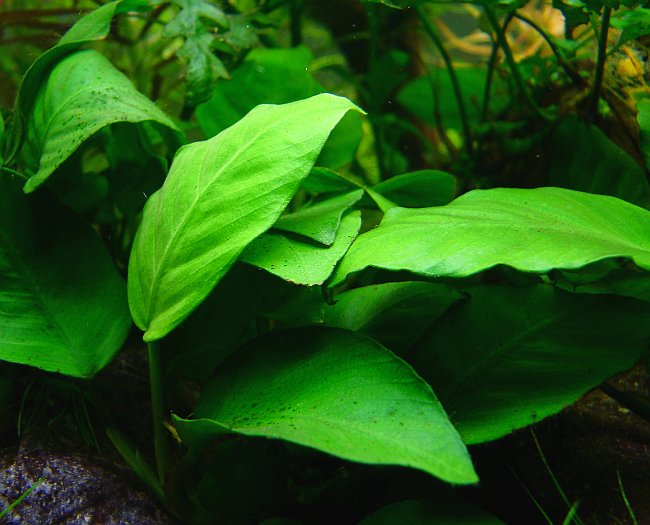
It is a good natured plant requiring no specialist nurturing or care. A slow growing plant, they need little in terms of thinning out or trimming. Anubias Nana will thrive well in any lighting conditions within the aquarium environment.
Anubias Nana is very easy to propagate to create new plants for your aquarium. Simply divide the rhizomes with a sharp knife, then re-attach the new plants to their new position – whether stone or wood in the tank.
Your Betta fish will enjoy using the broad leaves of the Anubias plant to rest on, whilst they conserve their energy or sleep. They will sometimes rest upon the bottom of the tank, but will really enjoy the opportunity to lay upon the leaves of this accommodating little plant. A good choice for Betta fish plants!
Dwarf Hairgrass
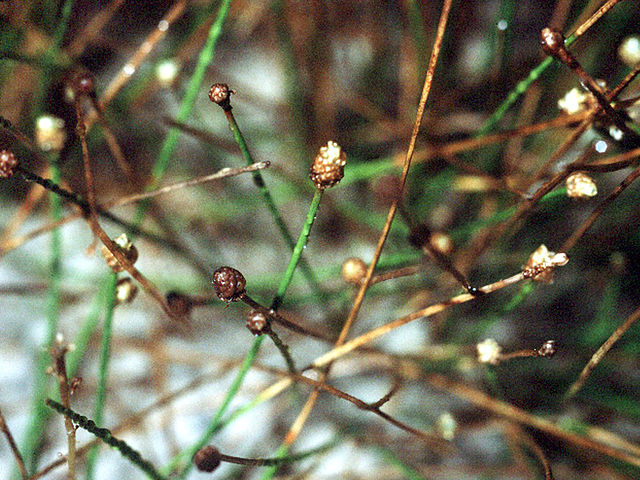
Dwarf hairgrass, as its name suggests, is a very fine grass that is capable of creating a carpet effect at the bottom of the aquarium.
There are three species of dwarf hairgrass, Eleocharis parvula, Eleocharis belem and Eleocharis acicularis Mini. You are more likely to encounter Eleocharis parvula when buying dwarf hairgrass – it’s the one most commonly sold in aquarium shops. It is slightly faster growing than the other two types and, as such, is the best choice if you’re looking for the carpeting growth across the bottom of the tank.
Start by gently teasing out the plant into plantlets of about 6 leaves. Then gently plant the roots within the substrate of your tank (using tweezers will make it easier!). Leaving approximately an inch between each plantlet. If you carefully trim the leaves of the plantlets once they become settled, you will gradually notice the plants strengthening and spreading. Gently trimming the leaves encourages the energy of the plant to be directed towards the roots, resulting in the spreading habit.
As it’s a carpeting plant used on the tank floor, Dwarf Hairgrass does require moderate lighting in the tank; but not too much or it will stress the Betta fish.
Water Sprite
Credit: Show_ryu CC BY-SA 3.0, WikiCommons
Water Sprite is a really good choice for your Betta fish tank. With slender delicate leaves, they create a protective forest of foliage for the fish to play and hide amongst.
Water Sprite is easy to grow and doesn’t need any special care. In fact, they tend to grow rapidly and require a little trimming to prevent excessive coverage.
These plants thrive in most light conditions. You can either plant Water Sprite into the substrate of the tank or allow it to float free. In a Betta tank, it’s a good idea to allow some of the Water Sprite to float free within the aquarium. This provides good hiding places for the fish, but can also house the bubble nests created by the fish to house the eggs. It also provides protection for the small fry once the eggs have hatched.
It is important, however, that Water Sprite is not allowed to cover the entire surface of the water if they are free-floating. This will inhibit the light that can penetrate to the lower reaches of the fish tank. Simply remove excessive planting from the surface of the water by gently teasing away small sections at a time.
Water Sprite is an attractive plant that is easy to care for and creates a great space for your Betta fish to play and hide. A good all-round addition to your Betta fish tank.
For a selection of a variety of live aquarium plants, you can get 40 plants comprising 11 different species quite economically as a starter pack.
Best Artificial Betta Fish Plants

The main benefit of artificial plants is the aesthetic value. They remain vibrant in colour and form, whilst natural plants obviously can turn brown and shed leaves, so vary in their appearance according to their state of health. Artificial plants don’t grow! It’s an extra job to stay on top of shaping and pruning your natural plants to avoid them dominating the tank space.
We recommend that you avoid plastic plants in your Betta fish aquarium. Plastic plants can have quite hard and sharp edges and leaf tips, which can damage the delicate fins of your Betta fish.
We find that silk plants are a better choice than plastic in terms of safety, and the appearance is also more refined and delicate. We find that silk bends and moves with the water flow and behaves more like a natural living plant.
Also, just add a couple of fake plants – not too many. They don’t add anything beneficial to the tank, such as oxygenating the water; they are merely decorative. It is better to use live plants for Betta fish generally, but an occasional statement plant in silk is a fine additional feature.
Care of Artificial Betta Fish Plants
Always wash your new silk plants thoroughly in very warm water before introducing it into your Betta fish tank. This removes any obvious dirt, and will deal with most of the bacteria that may be present.
Please check any artificial plants thoroughly before introducing them into your Betta tank. Some artificial plants, even if predominantly made of silk, can have sharp areas of plastic which you’ll need to remove or cut away prior to installing in your aquarium.
Incorporate the cleaning of any artificial plants with the general cleaning and housekeeping of your tank. Thoroughly clean the plants with each water change to ensure that algae and feces from your Betta fish are completely removed.
Silk Aquarium Fern by Imagitarium, Bright Green
- Adds interest and natural beauty to your aquatic habitat
- Enhances aquarium while producing shelter to reduce fish stress
- Safe for both freshwater or saltwater environments
These silk ferns are very delicate and closely resemble living plants. These plants will provide a safe haven for your Betta fish. The fronds are really soft and won’t harm your fish. The fade resistant foliage will ensure they stay looking attractive in the aquarium and won’t leach colour into the water.
Some buyers of this product have commented that the colour is a very vibrant green, so isn’t a suitable choice if you’re looking for something subtle that blends in with other foliage. Cover the base with substrate for the best effect.
Lobelia Silk Plant by Marina Fish Tank Decorations
- Lobelia silk plant aquarium decoration for aquatic environments undulates with currents
- Natural-looking translucent colors closely mimic live aquarium plants and won't fade
- Easy to install and secure, to stand up in fish tank simply bury base in aquarium gravel
- Made of safe, non-toxic silk material that will not affect aquarium water chemistry
- Fish tank decoration measures 8 inches tall
Another artificial plant made from silk which shouldn’t harm your Betta fish. As we’ve repeatedly stated in this article, we strongly recommend living aquatic plants for your Betta tanks, but a couple of artificial plants can be used as statement pieces.
This silk plant is a natural looking option, and the delicate leaves are lightweight and move gracefully with the flow of the water. The silk used in creating this plant is quite subtle in colour and shouldn’t fade.
Standing at approximately 8 inches tall, this is a good size for the middle area of the tank. As with the majority of artificial plants, we recommend covering the base with substrate for a more natural effect.
Silk Plant Set by BiOrb – Green & Purple
- Use these beautiful, silky plants to add color and dimension to your aquarium.
- Ideal silk plants for fish with delicate fins.
- Compatible with Freshwater/Saltwater/Tropical aquarium set ups.
- Item Package weight : 0.25 pounds
These plants come in a twin pack comprising two different colour varieties. Ideal for the delicate fins of Betta fish, these artificial plants by biOrb will enhance the appearance of any tank.
These plants are bottom weighted so are easy to install into the tank, and should stay where they are placed. They look really attractive within their spherical weighted orbs. Lightweight and soft, they branch out into the water and sway with the current and flow of the tank. The tallest of the two plants is approximately 10 inches tall, so will blend well with other artificial plants and the natural, live planting within your tank.
Purple Cluster Silk Aquarium Plant by Imagitarium – Large Size
We’re including this silk plant in our Top 6 List of artificial plants for your Betta tank because it’s really eye catching and vibrant. The colour is lovely and exotic without being overly bright and garish.
Again, being made of silk it will be far more gentle for your Betta fish than many of the plastic alternatives.
The particular plant that you can link to here is the large size, which stands at approximately 10 inches tall, but there is a small size which would be fine for a smaller tank of around the 10 gallon size.
This plant will really enhance the beauty of your tank as it sways with the flow and current within your aquarium. It is quite a dense artificial plant, so will provide places for your Betta fish to hide.
This plant has a weighted base which, one covered with your substrate, is unobtrusive. Do check the plants carefully before introducing into your Betta fish aquarium, as there are some small plastic elements that you should trim first.
Purple Kelp Aquarium Set by BiOrb – Medium
- Give your biorb a colorful appeal with these Plastic and silk kelp Plants
- Compatible with freshwater/Saltwater/Tropical Aquarium set ups
- Fish friendly
This medium artificial plant set comprising two colorful and vibrant plants in two styles, is actually quite tall, measuring approximately 13 inches in height – so ideal for the larger Betta fish aquarium. There is also a small size available at approximately 10 inches in height.
Although one of these plants is actually plastic rather than the silk that we usually recommend, the plastic used is quite soft so should pose no risk to the delicate fins of your Betta fish. The leafy plant in this duo has soft fabric leaves, although it is not silk; it also has plastic stems but doesn’t harm the fish as, again, the plastic is very soft.
No wire has been used in the design which is advantageous when using for delicate fish like Bettas – the leafy plant gains form and stands upright once in the water of your tank. The weighted bases of the plants ensure they remain where they’re put in the tank, and don’t shift with the natural swaying of the leaves. All in all, a very attractive and safe choice for your Betta tank, and will combine perfectly with your live, natural aquarium planting.
Blue, Silk Aquarium Plant by Imagitarium – Large
- Safe for both freshwater or saltwater environments
- Enhanced design with weighted base
- Large background plant covers wires, tubes and heaters
Another larger sized silk plant from Imagitarium, which is ideal for the back of the aquarium. Really vibrant and exotic, it’s a great choice for a Betta fish aquarium. The stems are made of plastic, but are reported to be a soft plastic acceptable for the delicate fins of the Betta fish. Please do always check the plastic parts carefully before installing into your Betta aquarium – we recommend this as a general rule anyway.
Gently sways with the water flow in your tank, and weighted at the base to avoid shifting position within the tank.
Unscrupulous Trade In Betta Fish
It is vital that we stress here the importance of not supporting the trade and sale of Betta Fish. Often purchased by the pet industry from fish farms in South East Asia, these beautiful and sensitive fish are often treated terribly from the moment they are born. Often kept in small bottles and transported long distances to the US for sale to pet shops and the public – it is a trade for profit, and unfortunately the care of the fish is not high on the agenda.
So we urge you to think again before purchasing Betta fish. However, if you do plan on having Betta Fish in your aquarium (perhaps you are rescuing some from another fish owner who no longer wants them), then you must be prepared to study and understand their specific environmental and dietary needs.
In this article, we will be examining both living plants and decorative artificial plants that will best meet the habitat needs of your Betta fish.
Conclusion
Although we generally prefer natural, live planting in any aquarium, in practice a combination of both live and artificial plants works well. It provides the best of both worlds. You receive all the benefits of oxygenation from the live plants, as well as the maintenance free benefits and consistent appearance of the artificial plants. Adding Indian almond leaves to the tank can be beneficial too, helping to regular general and carbonate water hardness and providing a place for betta fish to sleep!
Broadly speaking, we prefer silk over plastic when considering artificial planting for your Betta Fish tank. This is due to the less abrasive nature of silk. That said, some of the plants in our Best Plants for Betta Fish are in fact made of plastic, but they are soft to the touch and safe for the fish.
Soft and wire free, we like the stunning display created by the BiOrb Purple Kelp. Although one of the plants is plastic rather than silk, it is soft and safe for the aquarium environment.
Another striking plant for your Betta Fish tank that will really make a statement is the Imagitarium Purple Cluster Aquarium Plant. It’s a really beautiful colour. Vibrant, but quite natural and not garish. This plant is made of silk and so kind to your fish. It is light and delicate and will sway with the water currents within your tank, creating a really attractive effect.
You may also like:

